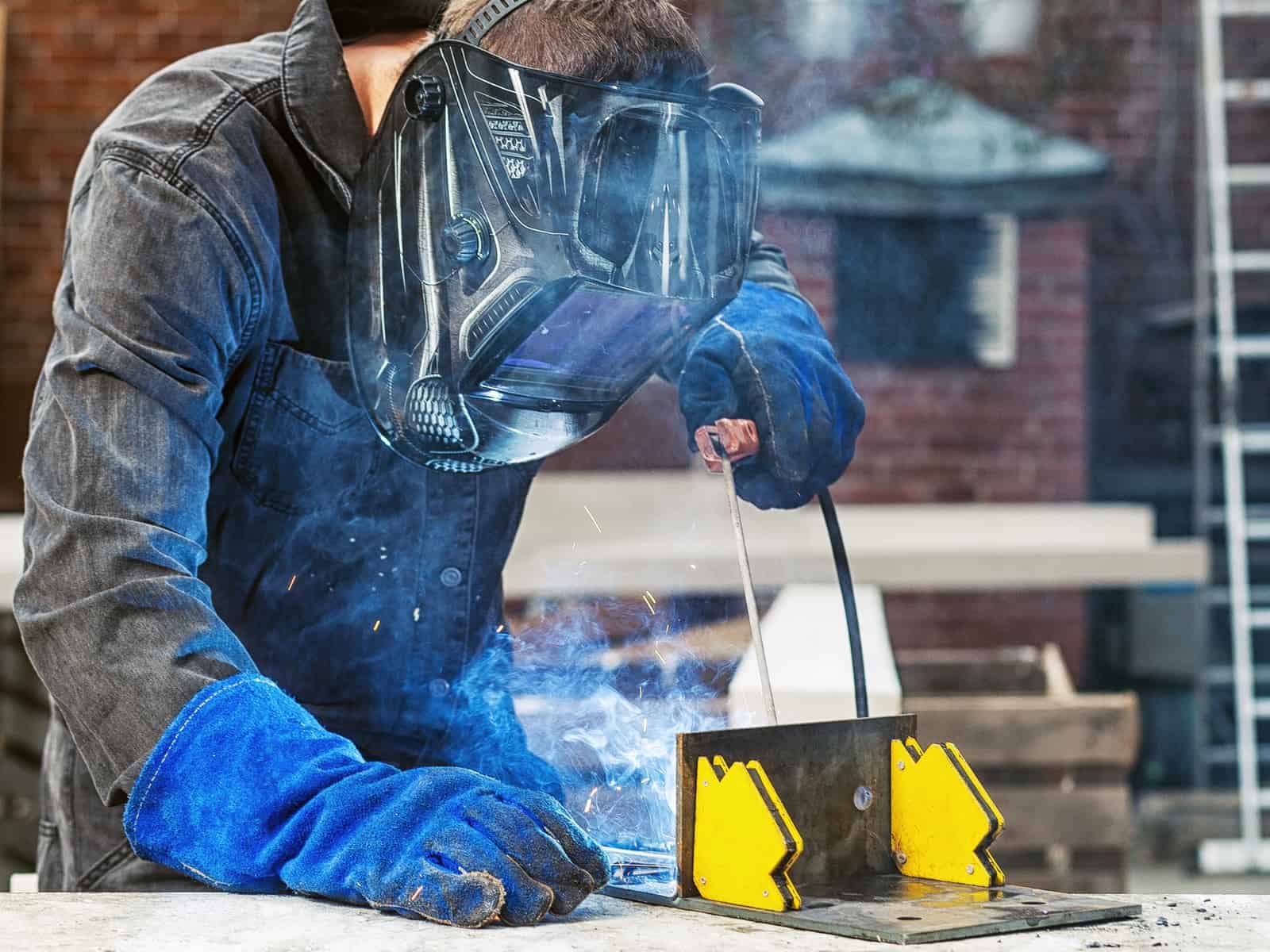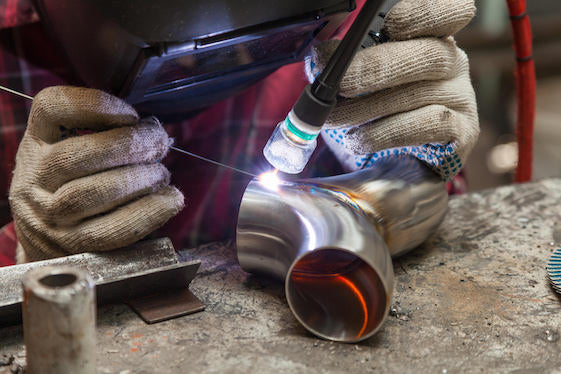Everything about Welding: Trick Insights Into Techniques and Ideal Practices for Success
Welding includes a range of strategies, each fit for particular products and applications. Comprehending these methods, such as GMAW, SMAW, and TIG, is crucial for achieving perfect results. Moreover, the right tools and safety and security practices can not be forgotten. As preparation and fixing play crucial roles in the welding procedure, understanding these components can greatly enhance the top quality of the final product. What are the crucial elements that guarantee an effective weld?
Understanding Various Welding Techniques
Welding strategies include a range of techniques, each fit to details applications and products. Among one of the most usual techniques are Gas Steel Arc Welding (GMAW), Shielded Steel Arc Welding (SMAW), and Tungsten Inert Gas Welding (TIG) GMAW, additionally known as MIG welding, is popular for its rate and adaptability, making it optimal for thin products. SMAW, or stick welding, is preferred for its simplicity and effectiveness in outside environments, specifically with thicker metals. TIG welding uses precision and control, making it suitable for complex work and non-ferrous steels (Belgrade Fabrication). Each strategy has its special advantages and considerations, enabling welders to select the very best technique based upon the project's demands, material kind, and desired results. Understanding these techniques is vital for successful welding
Crucial Welding Tools and Tools
While different welding strategies require particular abilities, the best devices and devices are just as necessary for attaining high quality results. Necessary welding tools includes welding machines, which vary depending on the method-- such as MIG, TIG, or stick welding. Protective gear, consisting of aprons, safety helmets, and gloves, guarantees security and comfort throughout the procedure. Additionally, clamps and components assist protect materials in position, guaranteeing precision in welds. Consumables like welding rods, wire, and securing gas are additionally essential parts that affect the quality of the weld. Tools such as grinders and cutters assist in surface preparation and post-weld finishing, contributing to a specialist end result. Spending in premium devices ultimately enhances the effectiveness and performance of welding jobs.
Security Practices in Welding
Proper security methods are crucial in the welding market to shield employees from potential hazards. Welders must put on suitable individual safety devices (PPE), consisting of safety helmets with proper shading, handwear covers, and flame-resistant apparel. Appropriate ventilation is vital to reduce direct exposure to dangerous fumes and gases created throughout the welding process. In addition, employees need to be learnt the right handling of welding equipment to avoid mishaps. Fire security actions, such as maintaining combustible materials far from the welding area and having fire extinguishers easily offered, are necessary. Regular examinations of devices and workspaces can help identify possible dangers before they bring about crashes. By sticking to these safety techniques, welders can create a much safer working setting and decrease risks connected with their profession.
Readying Materials for Welding
Preparing materials for welding is an important action that significantly affects the top quality and integrity of the last item (Montana Mobile Welding and Repair Fabrication). Correct prep work entails cleaning the surfaces to eliminate pollutants such as oil, rust, and dust, which can endanger the weld. Techniques such as grinding, fining sand, or making use of solvents are typically utilized to attain a tidy surface area. In addition, ensuring that the materials mesh well is essential; voids can cause weak welds. It's additionally crucial to think about the placement and positioning of the components, as this will influence the ease of welding and the last end result. Selecting the proper filler material and making sure compatibility with the base steels is essential for achieving solid, resilient welds.
Tips for Achieving High-Quality Welds
Attaining top quality welds calls for interest to information and adherence to best practices throughout the welding procedure. Appropriate joint preparation is crucial, ensuring surfaces are cost-free and clean from contaminants. Choosing the appropriate filler product and welding method based on the base metals is critical for excellent bonding. Preserving consistent traveling rate and angle while welding can advertise and avoid issues uniformity. Furthermore, controlling warm input is vital; too much heat can bring about bending and damaged joints. If necessary, on a regular basis checking the welds throughout the process allows for prompt modifications. Utilizing appropriate post-weld therapies, such as cleansing and stress alleviation, can improve the longevity and stability of the weld, inevitably making sure a successful result.
Troubleshooting Common Welding Issues
Welding typically offers difficulties that can affect the top quality and stability of the end product. Typical concerns such as porosity, irregular weld grains, and overheating can emerge, each calling for particular fixing methods. Understanding these issues is essential for welders to enhance their abilities and achieve ideal outcomes.
Porosity Issues Discussed
Although porosity can commonly be ignored, it continues to be an essential problem in welding that can compromise the honesty of an ended up product. Porosity describes the presence of little gas pockets within the weld grain, which can deteriorate the joint and lead to early failing. This issue usually arises from impurities, dampness, or improper shielding gas insurance coverage during the welding process. To alleviate porosity, welders need to validate that the base materials are tidy and completely dry, make use of proper More hints protecting gases, and maintain regular welding criteria. On a regular basis examining the equipment and atmosphere can also help identify prospective problems prior to they manifest in the weld. Resolving porosity properly is crucial for attaining solid, resilient welds that satisfy high quality standards.

Inconsistent Weld Beans
Irregular weld beads can considerably impact the top quality and toughness of an ended up product. Different factors contribute to this concern, including improper traveling speed, incorrect amperage settings, and irregular electrode angles. When the welder relocates also promptly, a bead might appear slim and lack penetration, while relocating too slowly can cause too much buildup. In addition, using the incorrect amperage can cause either undercutting or too much spatter, both of which concession weld integrity. The welder's method, such as inconsistent lantern movement, can additionally lead to unequal grain look. To minimize these issues, welders need to concentrate on keeping consistent, regulated motions and making sure correct equipment settings to achieve harmony in their welds. Uniformity is essential to achieving solid and trusted welds.
Getting Too Hot and Bending Issues
Excessive warmth during the welding process can result in significant getting too hot and contorting problems, impacting the structural stability of the workpiece. These problems often materialize as distortion, which can compromise positioning and fit-up, making additional assembly testing. Factors adding to overheating consist of the selection of welding parameters, such as voltage and take a trip speed, in addition to the kind of material being welded. To reduce these problems, welders should maintain consistent travel speed and ideal warm input while keeping an eye on the work surface temperature level. Furthermore, preheating or post-weld warm therapy click over here now can aid reduce stress and anxieties created by rapid cooling - Montana Mobile Welding and Repair. Routine assessment and adherence to ideal methods are essential in avoiding getting too hot and guaranteeing the longevity and dependability of welded structures
Frequently Asked Questions
What Are the Job Opportunities in the Welding Industry?
The welding market uses varied job opportunities, including settings as welders, educators, engineers, and examiners. Professionals can work in manufacturing, building and construction, aerospace, and vehicle industries, benefiting from solid need and competitive wages in various duties.
Exactly How Can I Improve My Welding Speed Without Compromising Top Quality?
To improve welding rate without compromising high quality, one must exercise efficient techniques, keep devices, maximize settings, and boost hand-eye coordination. Normal training and looking for feedback can additionally significantly add to achieving quicker, high-quality welds.
What Accreditations Are Available for Welders?
Countless certifications exist for welders, consisting of those from the American Welding Society (AWS), the National Center for Construction Education and Research (NCCER), and various industry-specific organizations. These qualifications boost employability and demonstrate ability proficiency.
Exactly How Does Welding Impact the Qualities of Metals?
Welding influences the homes of metals by altering their microstructure, which can lead to modifications in ductility, solidity, and toughness. Heat input and air conditioning prices throughout the process substantially influence these material characteristics.
Can I Weld Dissimilar Metals Together?
